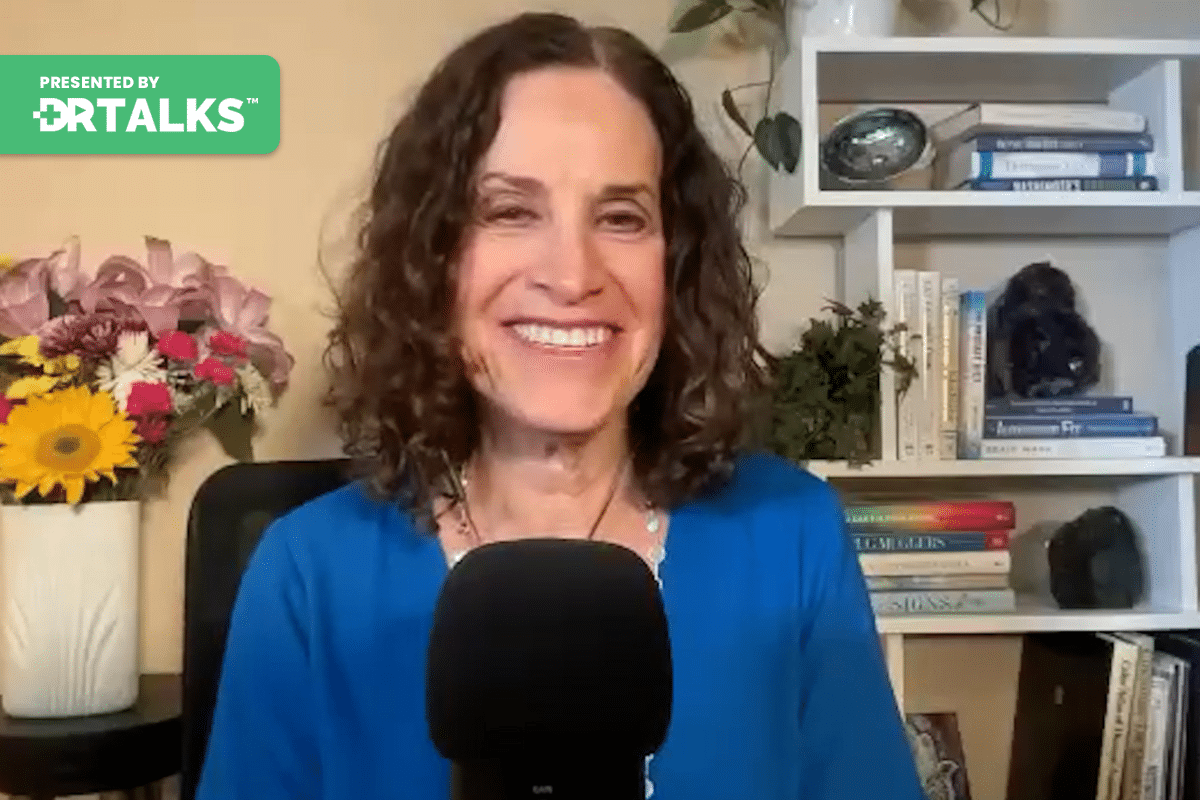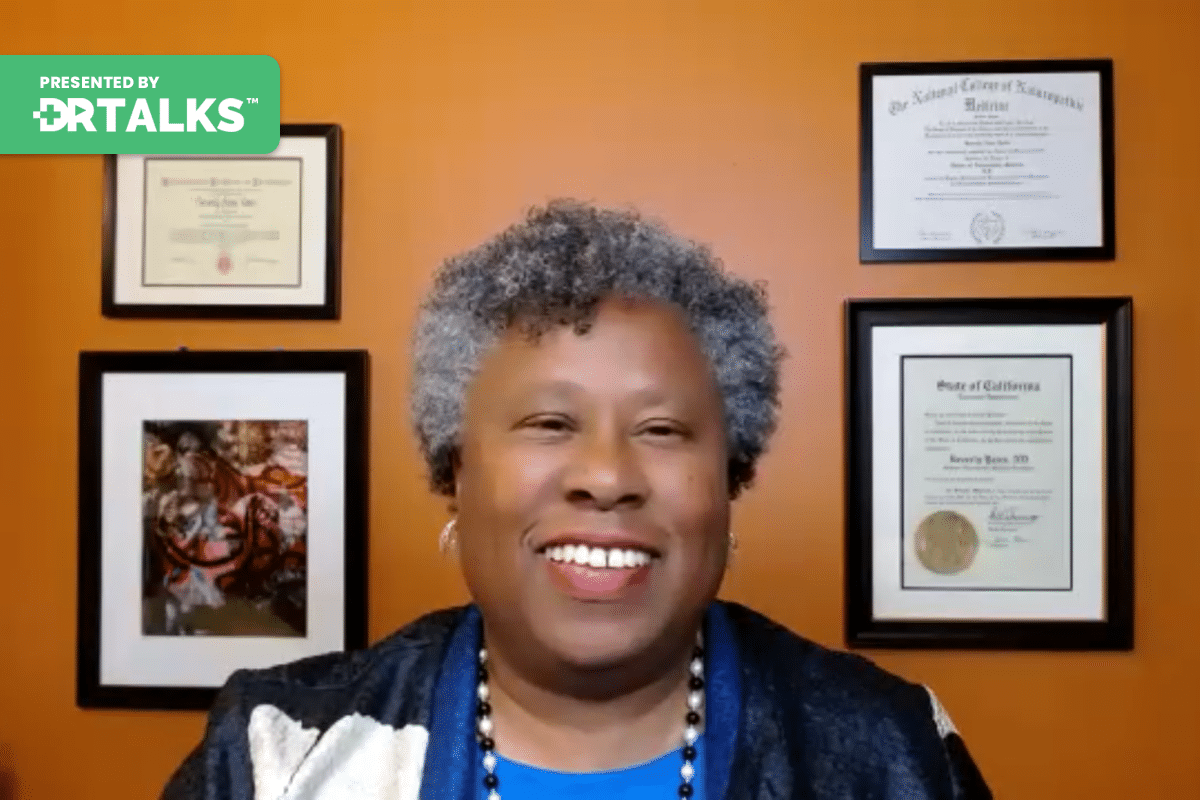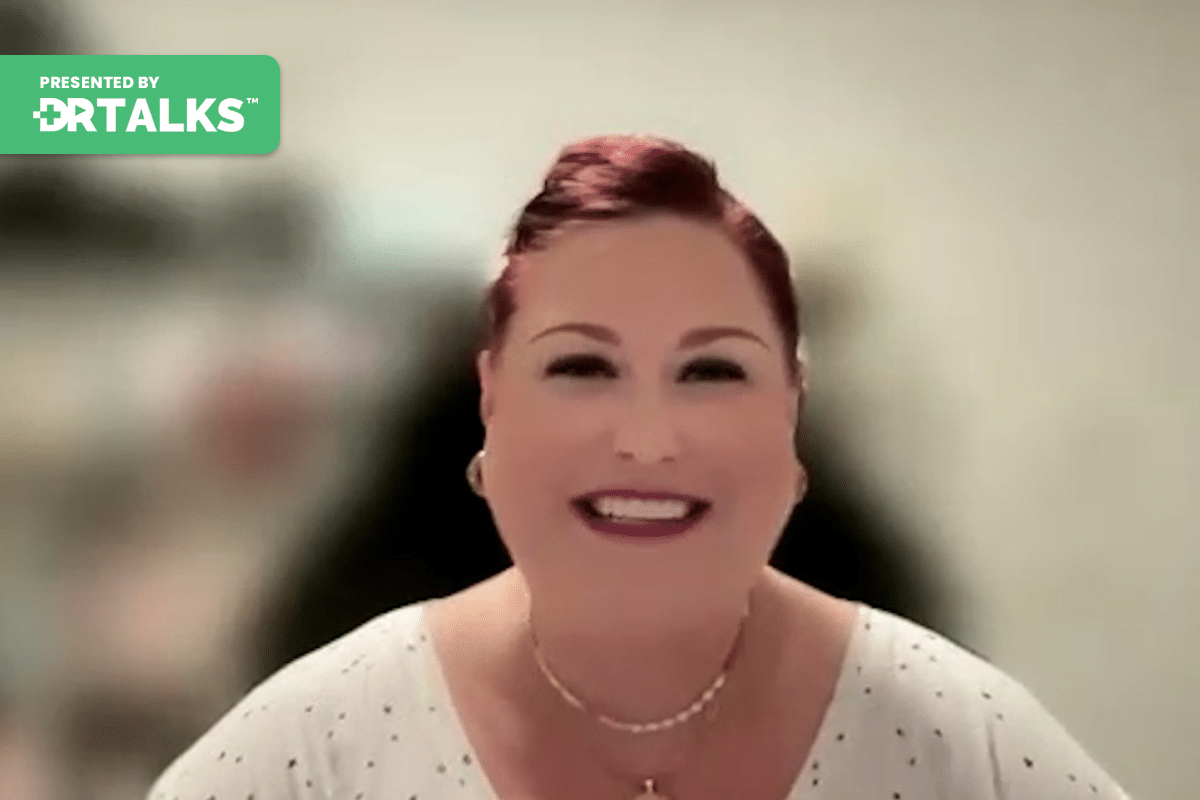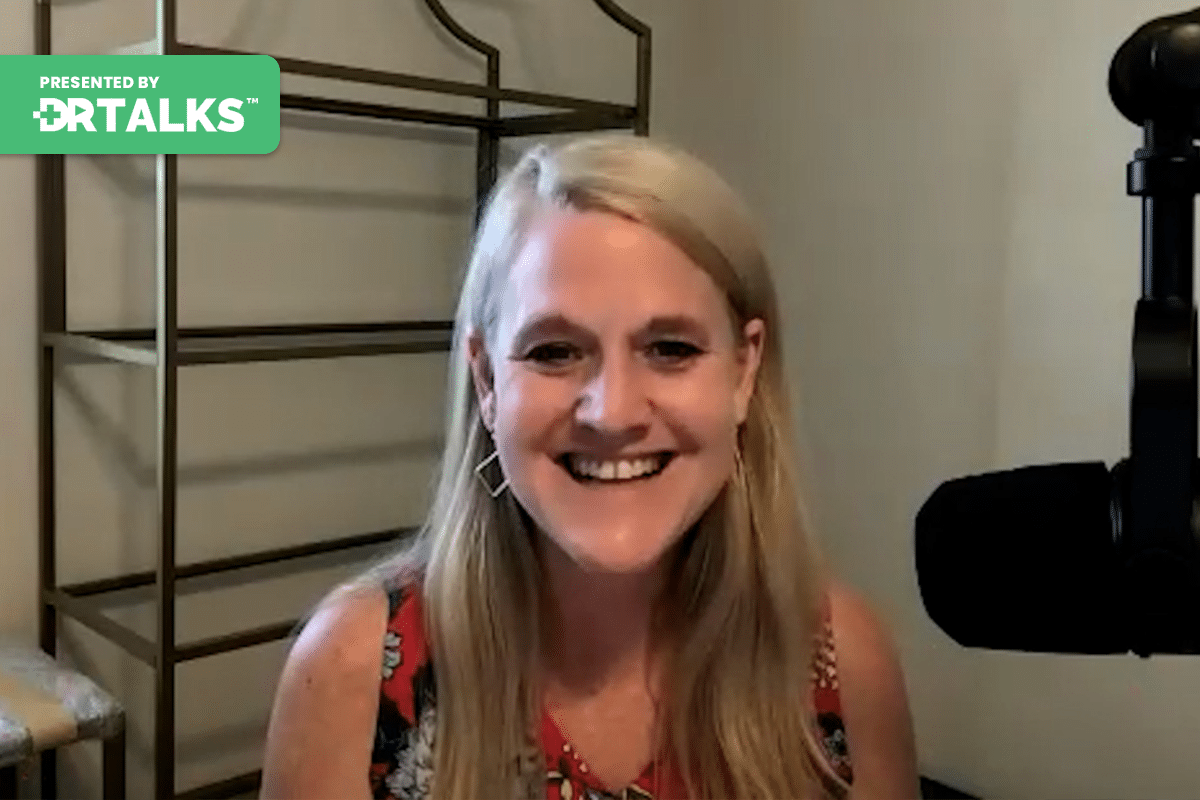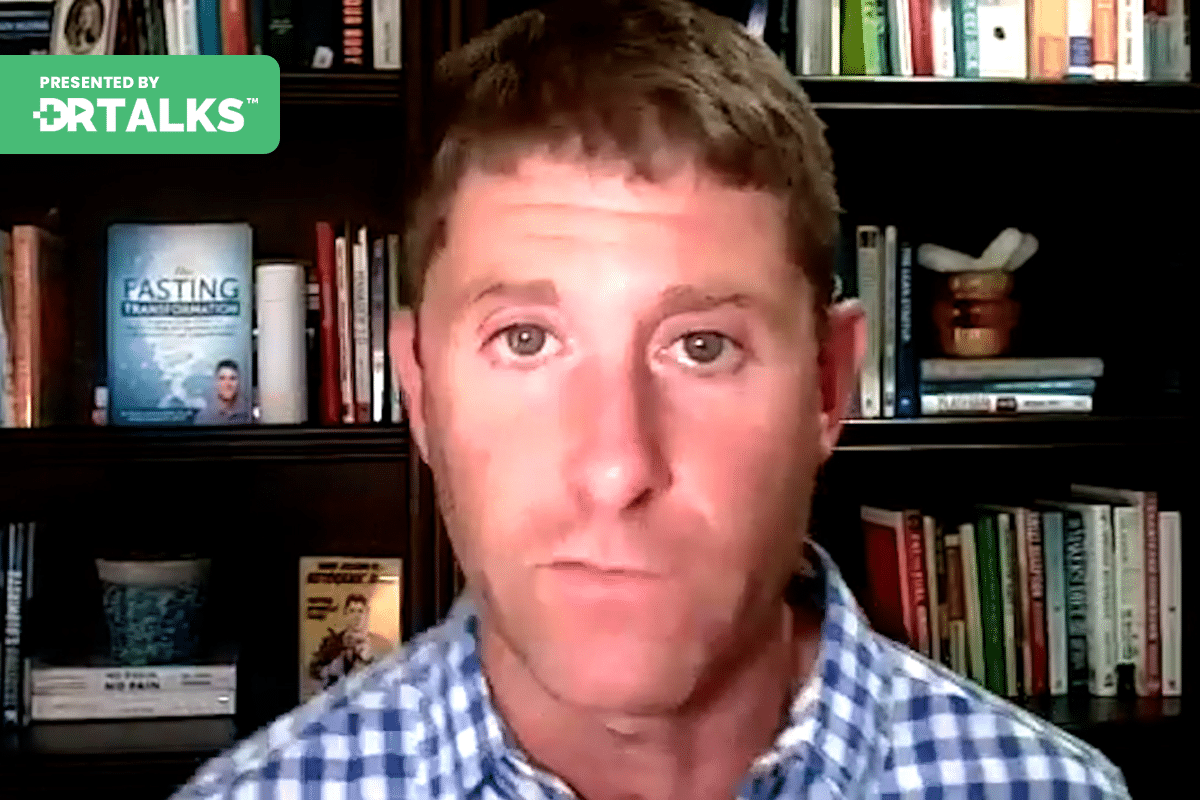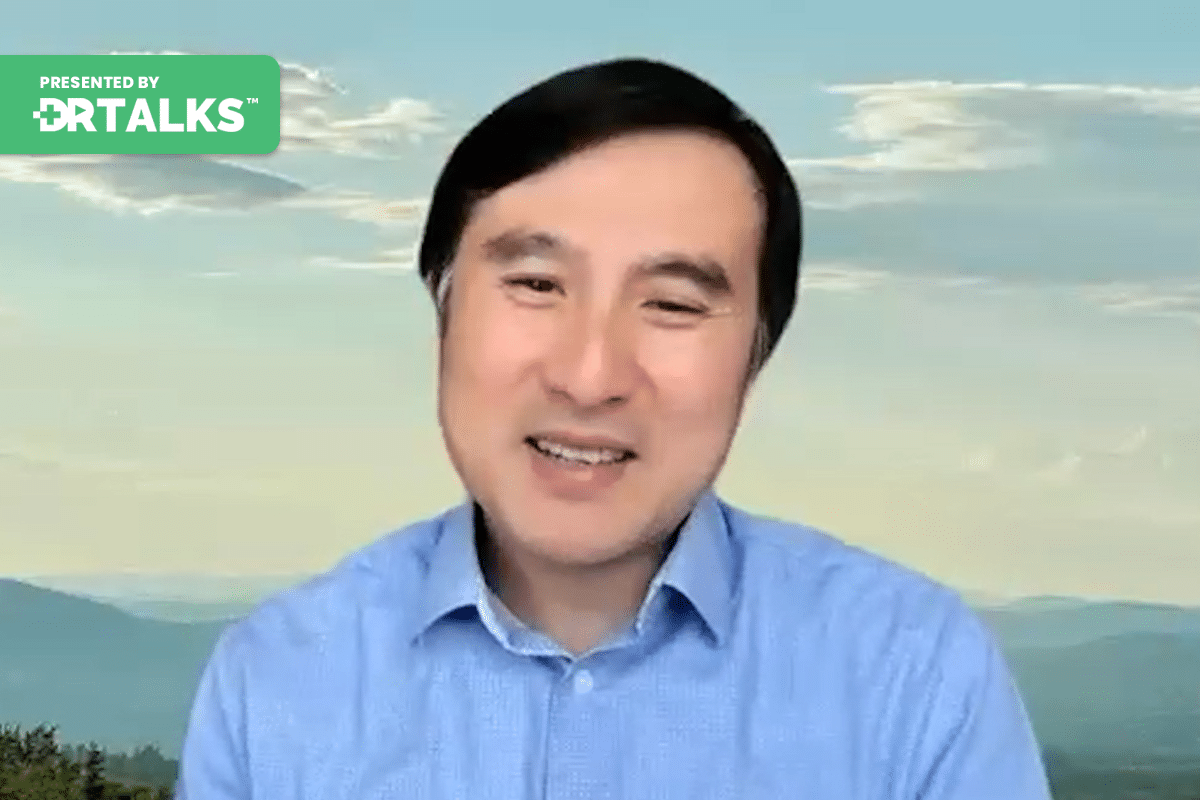Join the discussion below
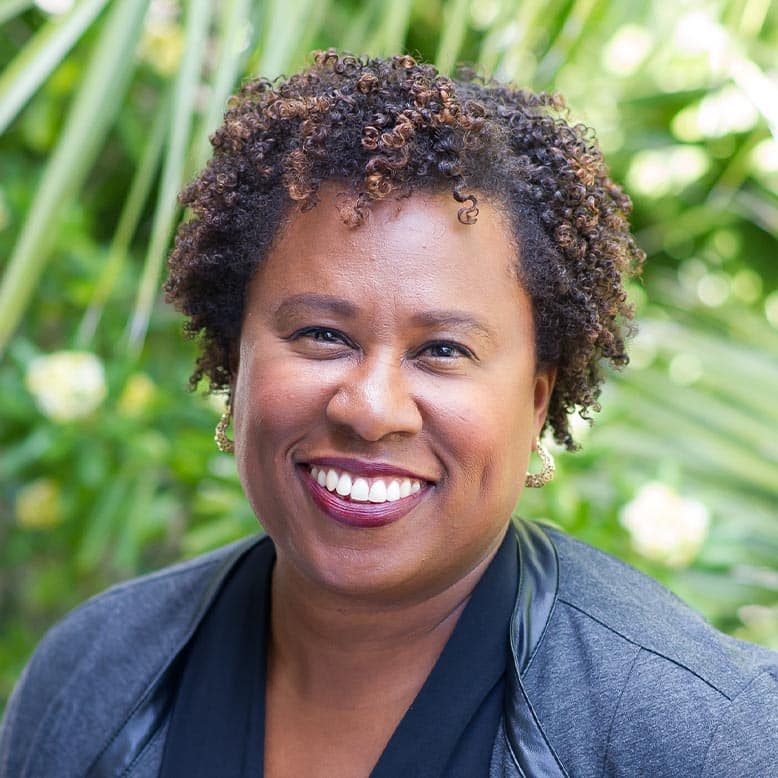
Beverly Yates, ND is a licensed Doctor of Naturopathic Medicine, who used her background in MIT Electrical Engineering and work as a Systems Engineer to create the Yates Protocol, an effective program for people who have diabetes to live the life they love. Dr. Yates is on a mission to... Read More
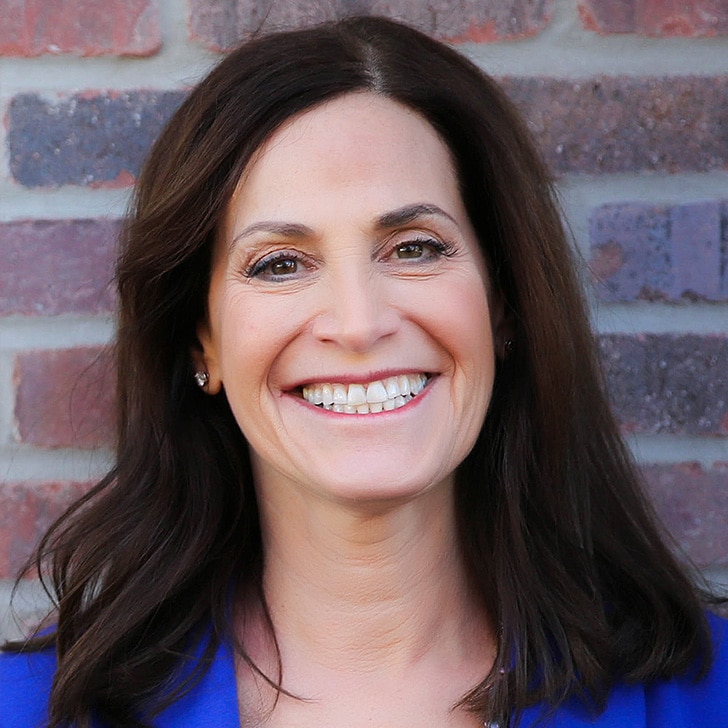
Margie Bissinger is a physical therapist, integrative health coach, author, and happiness trainer. Margie has over 25 years of experience helping people with osteoporosis and osteopenia improve their bone health through an integrative comprehensive approach. She created the Happy Bones, Happy Life online program and hosts the Happy Bones, Happy... Read More
- Learn why people with diabetes are at an increased risk of osteoporosis and fractures
- Discover essential exercises for building and maintaining strong bones
- Understand the role of stress, happiness, and key nutrients/supplements in managing bone health and diabetes
- This video is part of the Reversing Type 2 Diabetes Summit
Related Topics
Aging, Autoimmune Disease, Bone Health, Chronic Illness, Diabetes, Genetics, Inflammation, OsteoporosisBeverly Yates, ND
Hi, everyone. Welcome to the reversing type 2 Diabetes Summit. I’m your host, Dr. Beverly Yates, M.D.. Delighted that you’re here with us on this episode. In this particular episode, we’re going to take a deep dive into some of the interesting aspects and overlaps of osteoporosis with type 2 diabetes is prediabetes and any kind of diabetes, type 1 issues that can show up for other blood sugar dysregulation. With that, I’d love to introduce you to my dear friend Margie Bissinger. Margie is an amazing expert, well versed in all of this and has a really wonderful perspective to bring to share with us. So welcome, Margie.
Margie Bissinger, MS, PT, CHC
Oh, thank you so much for inviting me. I’m so excited to be here with everybody because there’s so many things that people can do to keep their bones strong and healthy and there’s so much overlap with type with all types of diabetes and blood sugar issues. So I’m really excited to present that. However, with just a little bit of background about me. So I’m a physical therapist. I’ve been a physical therapist for quite a long time. I also am also an integrative health coach as well as a happiness trainer, and I’ve been working with people with osteoporosis and preventing osteoporosis and in dealing with bone loss really for over 25 years. And the good news is there’s so much that can be done, but a lot of people just don’t realize or just don’t know what to do. So hopefully we’ll really help people with that. I’ve hosted Summits on Osteoporosis. I’ve a podcast called Happy Bones, Happy Life, because I believe happiness is a big part of it as well. And and I’m excited to be here. So thank you so much for including me.
Beverly Yates, ND
Absolutely. This is really a wonderful thing to be able to share with our audience. So given your expertise, which overlaps with the very things people need. Right. You know, the aspects of coaching, certainly being a physical therapist and an expert on how to move the body to achieve a particular outcome, right. So why is it that people who have diabetes are at an increased risk for osteoporosis and fractures? I don’t know that everyone really understands that relationship.
Margie Bissinger, MS, PT, CHC
You know, it’s so interesting because a lot of times the way that it’s measured, the way osteoporosis measures through a bone density test. And so oftentimes people with diabetes, their bone density test will be okay, but yet there are significantly increased risk of fractures. And the reason that is, is because there’s two parts to it. Well, first of all, the reason people with diabetes and blood sugar issues is that elevated blood glucose can stimulate. It causes inflammation in and it can stimulate the osteo class. Those are the cells that break down bone to break down bone, number one. It also impairs the bone building cells, the osteoblasts. So and the research has shown that both Type 1 and type 2 diabetes with Type 1 diabetes has lower bone density and increased fracture risk. type 2 diabetes doesn’t necessarily have low bone density, but increase fracture risk, which is so interesting because people may think, Oh, my bones are fine, they get a bone density test and their bones are fine. The reason is that people, you know, 85% of people who have diabetes are a little overweight. And so that will mean if you’re overweight, your bone density might look better. But the quality, whether it will break or not, what’s the quality of the bone? What does it look like inside the bone that is shown to be significantly lower in people with diabetes, both Type 1 and type 2 and also people even insulin resistance. They’ve done studies in the journal Clinical Endocrinology and Metabolism that showed that people with increased insulin resistance had reduced bone density. So yeah, so it’s then a higher risk for osteoporosis and fractures. So it’s something that’s really important. And again, people so I just want to say one thing about that. When you do just a little tip, when you get the bone density tests if you can, it’s called the TBS trabecular bone score that measures quality. It’s sort of like a software they put over and they can see the quality of the bone. So I think not to be fooled. Oh, your bone density is fine. I don’t have to worry about it. That’s not the case. You can if you have diabetes or insulin resistance, you’re still at increased fracture risk. So you want to do all the things we’re going to talk about today.
Beverly Yates, ND
All right. That’s a great distinction. So, friends, remember now Margie just told you trabecular bone score the TBS do that in addition to the scans often it’s a DEXA scan or something like that as an initial screen. So if someone’s telling you that your bone density is amazing, make sure you have the detail, because density is one thing, quality is another.
Margie Bissinger, MS, PT, CHC
Exactly.
Beverly Yates, ND
All right, great. So with that information now, Margie, people have that in hand. What steps can people who have diabetes, younger blood sugar regulation issues take to improve their bone health?
Margie Bissinger, MS, PT, CHC
Well, the good news is there’s so much that can be done in terms of I like to take an integrative approach. And so, first of all, what we’re eating, what nutrients we’re getting, you know, the bones require various nutrients. A lot of times people think, oh, just calcium and vitamin D, but there’s more to it than that. They need protein, they need magnesium, they need vitamin K2. It’s a whole array of nutrients that keep our bones strong. So number one, diet is so important and also supplementing as needed. So getting all those nutrients, number one, and being able to digest them, that’s a big issue. A lot of people have digestive problems, so even though they might be eating the food, they’re not absorbing the nutrients. So also working on digestion is going to help your bones. Number three, and my big thing is exercise. Everybody can improve their bone health through exercise. I think even if you’re a person who has issues, even a lot of pain, you can still do balance exercises because the big problem with osteoporosis and the big risk factor is fractures.
And most fractures occur with a fall. So just doing daily balance exercises can make such a big difference and prevent falls, prevent fractures. And unfortunately, when people have a hip fracture, a 25% will die within the year after the hip fracture. And there’s a large percent that ends up in nursing homes and lose their mobility. So it’s a very big deal and something we want to prevent. And it can be preventable. So everybody can do different types of balance exercises and improve their balance and as well as strength training and strength training so important can increase bone density. And you feel so empowered when you’re stronger and as well as posture, that’s going to make a big difference as well. And weight bearing. But the good news also with with how this ties in with diabetes is it can really lower your blood sugar as well. Exercise is such an important component. So you’re helping your bones and you’re also helping your blood sugar at the same time. So exercise is just so important. And then also stress reduction. And I also teach happiness. So I combine the two because it’s mind body and unfortunately, stress increases cortisol, which is the stress hormone, and that’s been shown to increase breakdown of the bones and reduce the bone building cells as well. So just stress in itself is going to negatively affect your bones.
So we’re working on different stress reduction techniques as well as I also teach, you know, happiness habits is going to make a big difference. So I, I look at it and one last thing is the root cause, which is so important also in diabetes is to figure out is there an underlying root cause? Because oftentimes people will get a bone density test and they’ll just say, oh, you have osteoporosis, go on medicine, not looking into what’s causing it, is it? They have so much inflammation that’s also associated with their diabetes and because of the inflammation with the blood sugar. Is that the reason? Is it that they have, you know, celiac disease is whatever it is that you need to see? Are they not absorbing their nutrients because of digested? So you need to also figure out the root cause When you do all those things, guess what? Your bones can get better and you can. And even, you know, you can really make a difference. And I have people oh gosh, in their eighties and nineties and they’re so vibrant and so active and it’s so exciting because you have so much control and and, you know, people look back and they think the diagnosis of osteoporosis was really a silver lining because they’ve done so just like diabetes. There’s so many positive steps you can take to make a big difference.
Beverly Yates, ND
Absolutely. You know, people can take charge of their health. And the good news is that making one positive change like, say, exercise and strength training, can touch a lot of things, whether it is building better and stronger, better quality bones rate for osteoporosis, concerns, getting a hold of blood sugar issues and also improving mood. Whatever it may be. So you’re absolutely right. You know, don’t love it that these things are all interrelated. It’s pretty cool.
Margie Bissinger, MS, PT, CHC
You know, it’s so much fun because people will come to you. Most of the people, a lot of the people that I was seeing when I worked with people one on one or came or even just in my programs, they come because they have osteoporosis and they want to know what can they do? They don’t want to go on medication. You know what are the possibilities? And then lo and behold, their diabetes get, you know, their blood sugar improves, their digestion improves, and they become empowered and happier. So, yes, it’s such a win win. And as I said, I love to empower people because it’s doable. And it’s just yes, I totally agree.
Beverly Yates, ND
Okay. So with this in mind, now that you’ve opened up the field of talking about exercise, specifically, what exercises are important for building better, stronger bones?
Margie Bissinger, MS, PT, CHC
So what they found, there’s two types that really can stimulate the bone. And so one is resistance exercise. So if you’re contracting your muscle against a force, that force is pulling and like shaking this area and it’s saying, hey, we need more bone here. So resistance is so important. And even twice a week the research has been positive that people were able to increase bone density. Even people have osteoporosis. So it’s never too early. I mean, right now we sort of have a situation where young people are not exercising. They’re, you know, they’re very sedentary, but it’s never too early and it’s never too late. I promise you. I’ve had so many couch potatoes that started a strength training program and they’ve improved, you know, they’re growing density as well as even just maintain it. But people are able to improve their bone health by doing so. Resistance exercise in the areas that are most susceptible to fractures that we want to make sure we get are the spine, the hips and the rest. And I see people, you know, they’re doing different exercises. When you’re holding a weight, you will get some resistance on the wrist and but the area that, you know, they’ll do leg exercise, but a lot of people forget the spine. So working on the muscles of the back, you know, when you’re working on different things, that’s going to be so very important. And yeah, so, so strength training. And the other thing is in terms of repetitions, it’s not doing throw repetitions. That’s not what the research has shown. The research has shown maybe 8 to 10 repetitions because you want to work at a weight that’s somewhat hard in really good alignment and posture. That’s key. And, and it’s the you it’s the weight that’s going to say, hey, we need more bone here, not the amount of repetitions. So you want to choose and I’m a big believer in seeing a physical therapist. It’s usually covered by insurance. And then you can work with someone who knows what’s going on. They’re making sure you’re doing exercises safely. And so I’m such a big believer in just asking your doctor, people aren’t supposed people, you know, the doctors, conventional doctors that everybody works with, physical therapists. They just sometimes don’t think about it. So just ask them, You know, I would like to see a physical therapist to help me with the exercise program. Not a problem. And usually it’s covered for osteoporosis or it’s totally even diabetes. It usually is covered as well. And anyway, so yes, you want resistance number one, also weight bearing. So again, when you’re that’s when you’re doing something against the force of gravity. So there be walking, dancing, jogging, anything, you know, against gravity, unlike swimming and but the thing is a lot of people think, well walking’s enough. It really isn’t.
It’s not enough force. Yes, walking’s good. But for those who can tolerate it and again, it depends on your bone density, you know, jumping even going up on your toes down on your heels. It’s the force, the impact that they found. You know, they did a study with people hopping on one leg and they increased bone density in the hip that they have done and the other lost was density. So not that everybody should do that, but the point is that so so, you know, in terms of weight bearing is really good. But, you know, you have to love it. You don’t want it to be punishing like some people go on the treadmill. But this is awful. No, you can dance. You can do. I’m a huge qigong. I love qigong. You can do qigong. You there’s just so many options that you can find that you should love. So resistance way, weight bearing impact. And then I also balance is essential. And what I love about balance, I love teaching and moving back and forth and sideways. These people have really they that’s the research shows. That’s probably one of the best ways to improve your balance. And it’s fine. It’s mind body. Your blood sugar will decrease after you do a session ends. And yeah, so so balance is really important posture, which is which. I have people do you know every day different posture exercises. This is just because our society is one that really doesn’t it doesn’t even think about good posture, but it’s so important because it can increase your risk of fractures as well. And then I like people also to do endurance so that they have endurance for life and they can enjoy their life. So that’s what you should do. Do I mean, to tell them what they should avoid if they have osteoporosis?
Beverly Yates, ND
Absolutely. But let’s pause for just a second. I was thinking of something. You know, I run into some patients over the years in my 30 plus year career who have had struggles with getting access to physical therapists because sometimes their doctors have not thought it was essential. And depending on the details of how the doctor and the insurance and all that work in, they might need a referral. They may not be able to go direct access. So it’s when I tell people if you are struggling at all with access to a physical therapist, insist on it demand. Because keep in mind you are the customer. And if your doctor is not cooperating with something that’s just such a really essential requirement, you might want to reevaluate that relationship. So make sure you’re getting your needs met. So they go, you know, you find a way to get to a yes. All right. Back to you, Margie.
Margie Bissinger, MS, PT, CHC
Yeah, I love that. Yeah. Now, that’s such a good point, though, because. Yeah, new doctor and most doctors though your physical therapy, some things they don’t believe in you. There are integrative treatments. They don’t. But most people, they’ve worked with physical therapists. If you tell them now I’m just scared. I don’t know what exercises to do would be so helpful. I really think that the majority of physicians will say yes. If not, take your advice. Okay, so what not to do. This is really important because when I first started working with people with osteoporosis, I would have people come to my office and they showed me their exercises and they were doing exercises that actually increase their risk of fractures. So what that is, what you want to avoid is rounding forward bending, know anything where you’re touching your toes, where you’re rounding your back, where you especially even forward bending in rotation, but forward bending. And the reason I have my little spine here, the reason is I’m up here, we see a nice squeeze. This is the spine, this is the front, this is the back. And I cut it in half. So you can see here ideally this like this vertebrae. Number two, everything we see the quality of bone. It’s nice and compact and it’s a nice square shape. Now we look at number three, we see there’s like some holes that’s osteoporosis. But look at the lower right here. We see instead of being square shape, it’s now wedge shape.
And this is the front of the spine. This is what happens with osteoporosis. And oftentimes, if people get fractures, which can be silent. So if we’re bending forward, this one doesn’t move. But you can just imagine, if we’re bending forward, all the force is on the front of the spine where it’s already been compressed and already injured, and that’s where the fractures mostly occur. So that hopefully makes sense. So we don’t want to do any rounds. Not to say you can’t bend, you keep there’s an inward curve in your lower back and you maintain that and you bend from the hips and knees, keeping a lengthened spine, sort of like doing a squat. So you’re just not rounding. And same thing when it comes to Pilates, yoga, you can do things, but you avoid the rounded postures and you do the neutral postures and you only bend from the hips in this. So rounding is number one, and I’ve seen numerous people unfortunately get a fracture because they went to a new treadmill and it was low and they had two rounds out. So you just always want to visualize is your head’s a helium balloon or you’re attached to a helium balloon, your spine is lengthening as and maintaining that inward curve and your low back.
So forward bending and then the extremes of motion, so side bending, you only want to go around 75, 80%. You don’t want to push it. And this is again for people with osteo, an extremes of rotation as well. Just go to maybe 75%, 80%, but don’t push it. Like sometimes in classes they’ll do overpressure. So you don’t want to do that. So those are the main things. And also then for someone who has osteoporosis, be careful. If you’re taking something from above down, you don’t want anything too heavy from above. But that forward bending most people don’t know about and if you think of that, a lot of people in their day, they get up, they put their shoes on. So it’s just a matter of learning how to do that. With maintaining a spine. You’re bringing your leg to you or bending using a squat type of bend. So it’s called a hip hinge. So yeah, that’s really important because nobody wants to have a fracture just because they didn’t realize that forward bending could increase. And I would say for people with osteopenia also, you know, either because most of the fractures occur in the upper back and the DEXA is only in the lower spine. So we don’t really know. So it’s just it’s just a matter of taking precautions. And, you know, also for people with disc problems, that increases their you know, it can cause new problems with if you have herniated disc or any disc issues. So I prefer bending anyway from the hips and knees during daily activities.
Beverly Yates, ND
That totally makes sense. Thank you for walking us through and explaining it. I’m sure people can think about how they typically move or maybe they are seated and they’re constantly reaching for something. Or maybe when they’re driving and they’re reaching behind them, you know, in the car, you know, just just what seems like innocent movement that could actually be a problem. So it’s just good to be aware. Thank you for making that really clear so we can all understand it. All right. So with this in mind, what are the key, at least some of the key essential nutrients needed to build these healthier, stronger, higher quality bones?
Margie Bissinger, MS, PT, CHC
Okay. So if most people have heard about calcium and so that is very important. But what I find sometimes is people take too much calcium. You know, they’re getting some in their diet and then their doctor tells them and if they look at the chart, it will say 1200. So here they’re taking 1200 milligrams plus, they’re getting it in their diets. It more is not better in the United States. They say 1200 other countries, it’s a thousand. But the key is see how much you’re getting from your food first and then only supplement the additional. You know, again, because what they found with taking too much is now nothing’s 100% conclusive, but there is some research showing a possibility that there’s kidney stones or that the calcium is going in places. We don’t want it, cardiac issues. So, you know, we don’t want too much, but so calcium, vitamin D is essential. And then the key one that’s not magnesium is and that’s talked about at least a 2 to 1 ratio. So at least whatever you’re getting in calcium, at least half of that age is go way back. We had a 1 to 1 ratio of calcium to magnesium.
But in today’s day and age, we really most people are deficient in magnesium, so at least half the amount in calcium. But the other one I think that’s so missing and so important is vitamin K2, because vitamin K2 takes that calcium and puts it into the bones in the teeth and sweeps it out of the soft tissues. So I think that’s so essential. It’s not one like all the doctors will make sure your vitamin D, you know, they’ll check that. They’ll make sure you’re on calcium. That’s usually what they say. Calcium, Vitamin D, goodbye. Where this key, too, is absolutely critical. So I think I mean, the rainbow and other things, there’s other things, there’s zinc and there’s other different nutrients. And it’s possible. I always love doing a micronutrient test just to see if you know, if that’s possible for people. But if not, you know, these these everybody seems to need these. There’s not really an issue and you sort of helps you make sure that calcium is getting where it needs, but also protein. They found that as people get older, where they used to be afraid of protein for the bones, it’s very important. And they found that people are not getting enough protein. So we also want one protein and yeah, and healthy fats. And but it’s very, very important to get those nutrients because if you’re not, it will your body needs calcium. It will take it from the bones. And all of those nutrients make a big difference in the makeup of your bones.
Beverly Yates, ND
Absolutely. And here’s a synergy there. All right. Thank you for making that clear and talking about the things that I think are typically not clear to people, because usually when I run into folks with osteoporosis, they’re all aware of calcium and vitamin D and that’s it.
Margie Bissinger, MS, PT, CHC
So absolutely, it’s so true.
Beverly Yates, ND
All right, cool, cool. And now as we approach, you know, towards the end of our session here, let’s take a peek at this one. This is actually a big topic, but it’s essential. So how can reducing stress and increasing happiness improve both any issues with diabetes and our bone health?
Margie Bissinger, MS, PT, CHC
And this is such a big deal to what I teach because years ago as a physical therapist, I was working with patients with chronic pain, headaches, neck pain, back pain and they were just so unhappy. It was unbelievable. And I found when I started teaching what I call now happiness habits and all of a sudden their life changed. Their chronic pain got better. So I’ve been doing this now this probably, oh, over 37 years, I guess. But anyway, so because of the cortisol, the stress hormone that’s been shown, as I said earlier, to increase the activity of the osteoclasts that break down bone and reduce the activity of the osteoblasts, the bone building cells. And I see this so often, you know, people are so worried, oh, my gosh, am I eating the right food? Am I doing the right exercise? You know, people are just so nervous. Oh, my gosh, my taking exactly the right supplement. But all this stress is going to negatively affect your bones. I mean, they’ve shown people around on steroids. We know. And people are taking those kind of things. The body breaks down the bone as well. So the stress hormone can do that. And so it’s very important. And also with diabetes, I mean, just a funny thing because I’ve numerous times used the I’ve used the CGM myself and because we have a family history of issues with diabetes, my son has Type 1 and we have insulin resistance.
And so whenever my blood sugar started to creep, I put that on and see what’s going on. It’s amazing. After meditation, after any of the stress reduction techniques, it really goes down. It’s so incredible. I mean, a lot, at least like ten. It can signify greatly reduced the blood sugar. So I and I’ve seen this in your life will change what a better you know to reduce stress reduction techniques is one thing I think it’s so important, whether it’s deep breathing, whether it’s walking in the woods, whether there’s so many different things but make it a priority, it’s critical then the happiness habits, you just looking at life. I mean, there’s so many different ones I teach, but just even just looking at what’s good in your life instead of focusing on all the problems and what’s not working, because that’s going to put you in a very different mood and change. Just change the quality of your life. Plus, it really affects your blood sugar. It’s just incredible when you’re in, Oh, poor me, or you just get yourself all wound up with unhappy thoughts. Even if they’re just perceived, it’s still affects your stress level and it’s still going to make a difference. So plus, what a fun way. You know, who doesn’t want to increase their happiness, to reduce their stress? And you look back and you think, wow, how is my life different now? It’s yeah. So I’m just such a believer in that. And for people to make it so poor, make it a, you know, make it make it a priority in your life.
Beverly Yates, ND
Absolutely. All right. Thank you so much for being such a clear advocate for health and for making sure we maximize and enjoy our life and have that quality of life. I was particularly touched with your points about avoiding fracture, in part because of the serious consequences when people lose their balance, you know, you don’t have the appropriate steps in and they get disoriented and they have a fall. I’ve noticed absolutely the devastating consequences that can happen as we get older with falls. So we know that if we can stay in great shape and use our muscles and build our bones and take care of our blood sugar, we can live a long life and a happy, healthy life. But we really have to be intentional about it. We might not get that one without these focused activities. So, Margie, thank you for partnering with me here on this reversing type 2 Diabetes Summit. Friends, as you listen to all of our wonderful experts like Margie, please be sure to share these episodes and let people know this summit is happening while these wonderful material is up and available. It really helps us to reach more people effectively who are looking for quality information from actual experts on specific topics like this. Thank you so much, Margie.
Margie Bissinger, MS, PT, CHC
It’s my pleasure. Thank you.
Downloads

